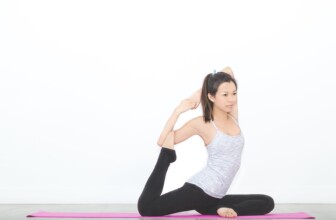Top Tips for Maintaining Healthy Hair: A Comprehensive Guide to Nourishment and Care
Introduction
Healthy hair is often associated with beauty, confidence, and overall wellness. However, maintaining vibrant and strong hair requires diligent care and attention. This comprehensive guide explores the essential elements of hair nourishment and care, equipping you with the knowledge to foster healthy hair.
Section 1: Understanding Hair Structure and Health
Before diving into care practices, it is crucial to understand what hair is and how its structure affects its health.
Hair is primarily composed of a protein called keratin, which consists of amino acids and forms the basis of hair strength and elasticity. Each strand of hair emerges from a follicle and consists of the following layers:
- Cuticle: The outermost layer, responsible for protecting the inner layers.
- Cortex: The middle layer, contains pigments that give hair its color and is responsible for most of the strength and texture.
- Medulla: The innermost layer, which may not be present in all hair types.
Understanding these components can help tailor your care routine to address specific needs and improve hair health.
Section 2: Nourishment from Within
Healthy hair begins at the roots—quite literally! A balanced diet is essential for maintaining strong, shiny hair. Here are some key nutrients for hair health:
- Protein: As the primary building block of hair, it's crucial to consume adequate amounts of protein-rich foods like eggs, fish, and legumes.
- Omega-3 Fatty Acids: Found in fish and flaxseeds, these essential fats nourish hair and promote scalp health.
- Vitamins A and C: These vitamins support sebum production and fight free radicals, contributing to a healthy scalp.
- Biotin: A B vitamin linked to hair growth, found in nuts, seeds, and whole grains.
- Iron and Zinc: Essential minerals for maintaining healthy hair, found in red meat, spinach, and pumpkin seeds.
Real-life Case Study: Jessica, a 28-year-old graphic designer, noticed her hair was thinning. Upon consulting a nutritionist, she learned that a lack of protein in her diet could be the culprit. By incorporating lean meats, beans, and nuts, Jessica observed significant improvement in her hair’s strength and volume within three months.
Section 3: Basic Hair Care Routine
Establishing a basic hair care routine is vital. Here are key elements to consider:
- Shampooing: Regular cleansing removes dirt and product buildup. Choose a sulfate-free shampoo that complements your hair type.
- Conditioning: Use a conditioner every time you shampoo, focusing on the ends. Deep-conditioning treatments should be incorporated weekly.
- Drying: Gently pat hair dry after washing; avoid vigorous rubbing. Use heat protectants if blow-drying.
- Brushing: Use a wide-tooth comb to detangle wet hair and minimize breakage. Brush hair only when necessary.
Incorporating these practices can drastically improve the condition of your hair over time.
Section 4: Scalp Health
You can’t have healthy hair without a healthy scalp. Here’s how to maintain optimal scalp health:
- Regular Cleansing: Prevent buildup that can lead to dandruff or irritation by shampooing regularly.
- Exfoliation: Use a scalp scrub or gentle exfoliation treatment monthly to remove dead skin cells.
- Moisturization: Incorporate scalp oils or treatments that hydrate and nourish.
Real-life Example: Mark, a 35-year-old barber, experienced persistent dandruff. After switching to a gentle exfoliating treatment and introducing a nourishing scalp oil, he noticed a marked decrease in flakes and irritation, boosting his confidence in his profession.
Section 5: Protecting Your Hair
Protection from environmental factors and heat damage is crucial for maintaining hair health. Here are several tips:
- Limit Heat Use: Stylers can damage hair. Opt for air-drying when possible or use low heat settings.
- Protective Styles: Braids, buns, and twists can protect ends from wear and tear.
- Sunscreen for Hair: UV rays can damage hair. Use hair products with UV protection.
By taking these precautions, you can substantially enhance your hair's longevity and vibrant appearance.
Section 6: Choosing Hair Products Wisely
The hair care products you choose can significantly affect your hair's health. Here are tips for selecting the right products:
- Tailor to Hair Type: Identify your hair type—straight, wavy, curly, or coily—and select shampoos and conditioners accordingly.
- Ingredient Awareness: Avoid sulfates, parabens, and silicones, which can lead to buildup and dryness.
- Consider Natural Options: Organic and natural products often have fewer chemicals and may suit sensitive scalps better.
FAQ: What ingredients should I look for in hair products for damaged hair?
Look for: Proteins, shea butter, jojoba oil, and natural oils (like argan and coconut oil) that enhance moisture and strength.
Section 7: Regular Hair Maintenance Routine
Beyond daily care, a regular maintenance routine is essential:
- Trimming: Schedule regular trims every 6 to 8 weeks to remove split ends.
- Deep Conditioning: Incorporate deep conditioning or hair masks weekly.
- Assess and Adapt: Regularly evaluate your hair's condition and adjust your routine based on its needs.
A case study involving Sarah, a busy mom, illustrates the importance of regular hair care. By setting aside time for a weekly deep conditioning treatment, her fine hair transformed from dry and brittle to soft and manageable.
Section 8: Frequently Asked Questions (FAQs)
Q1: How often should I wash my hair?
A: The frequency of washing depends on hair type. Oily hair may require washing every day, while dry hair may only need washing once or twice a week.
Q2: Are all hair oils the same?
A: No, different oils serve various purposes. Coconut oil penetrates the hair shaft, while jojoba oil closely resembles natural sebum.
Q3: Can stress affect hair health?
A: Yes, stress can lead to hair loss or exacerbate conditions like dandruff and scalp irritation.
Resources
| Source | Description | Link |
|---|---|---|
| American Academy of Dermatology | Comprehensive resources on hair health and dermatological conditions. | https://www.aad.org |
| Healthline | Articles on nutrition and its impact on hair health. | https://www.healthline.com |
| The Trichotillomania Learning Center | Resources for understanding hair-related disorders and conditions. | https://www.trich.org |
| International Journal of Trichology | Research articles and studies on hair and scalp health. | https://www.ijtrichology.com |
Conclusion
In conclusion, maintaining healthy hair involves a multifaceted approach that encompasses proper nourishment, a consistent care routine, and protective practices. The importance of understanding your hair type and scalp health cannot be overstated. By adopting these strategies and being mindful of both internal and external factors affecting hair health, anyone can achieve vibrant and strong hair.
Future trends in hair care point toward more personalized products that cater to individual hair health needs, reflecting a growing awareness of the science behind hair care. Stay curious and informed as this field continues to evolve.
Disclaimer
The information provided in this article is for educational purposes only and is not intended as medical advice. Please consult a healthcare provider or dermatologist for personalized recommendations and diagnoses concerning your hair and scalp health.










